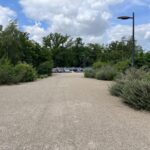Revitalizing the Historic be-MINE Mine Site in Beringen, Limburg

The Limburg Investment Company (LRM) is spearheading the transformation of the 32-hectare old be-MINE mine site in Beringen into a vibrant tourist-recreational hub. The project integrates various urban functions such as housing, commerce, and dining, while also preserving the site’s industrial heritage. Sweco Belgium, in collaboration with UAU Collectiv and Buro Landschap, has developed an image quality plan to guide the repurposing of the area, ensuring a harmonious blend of new developments with the existing landscape.
 Honoring Identity Through Design
Honoring Identity Through Design
Central to the redevelopment is the recognition of the site’s unique identity, shaped by its industrial past, urban renewal initiatives, and ecological evolution. The design ethos, “Designing with nature,” emphasizes the ecological integrity of the landscape. This approach entails meticulous analysis of soil composition, climate patterns, hydrology, and other ecological factors to inform landscape design decisions.
 Meeting the Challenge
Meeting the Challenge
The former mine sites, once neglected after closure, now present an opportunity to revitalize urban spaces while preserving historical heritage. The symbiosis between historical remnants and natural ecosystems creates a distinctive ambiance, enriching the social fabric of the city. By incorporating social and ecological considerations into the design process, the redevelopment aims to create bespoke amenities that resonate with the community.
The Forecourt: A Symbol of Transformation
Among the recent developments is the Forecourt, surrounding the main historical buildings. Historically serving as the site’s entrance, the Forecourt has been repurposed to host large events while preserving its open character and visual axes. The integration of natural vegetation enhances the area’s ambiance, maintaining a balance between historical significance and ecological sustainability.
 Cultivating Special Vegetation
Cultivating Special Vegetation
Special attention has been given to vegetation selection, particularly around the Mine Museum entrance and terrace. Prairie planting creates vibrant focal points amidst the greenery, offering a stark contrast to the natural wilderness of the surrounding landscape. Drought-resistant perennial plants, capable of thriving in the site’s rocky terrain, contribute to the preservation of the archaeological heritage within a verdant setting.
Embracing High-Quality Materials
The Forecourt’s design incorporates a thoughtful selection of paving materials to ensure durability and aesthetic appeal. Fine gravel, supported by a hardened sublayer, forms the primary paving material, blending seamlessly with the site’s spontaneous vegetation growth. Granite cobbles provide accessibility, catering to visitors of all abilities, while a Corten steel pathway accentuates the site’s main visual axis, connecting key attractions within be-MINE and beyond.
 The use of Corten steel not only serves a functional purpose but also adds visual interest, echoing the site’s weathered industrial elements. This design motif extends to all street furniture, fostering a cohesive aesthetic throughout the redevelopment.
The use of Corten steel not only serves a functional purpose but also adds visual interest, echoing the site’s weathered industrial elements. This design motif extends to all street furniture, fostering a cohesive aesthetic throughout the redevelopment.
In conclusion, the revitalization of the be-MINE mine site in Beringen, Limburg, stands as a testament to the successful integration of historical preservation, urban renewal, and ecological stewardship. Through meticulous planning and design, the project exemplifies a harmonious synergy between past and present, offering a vibrant communal space that honors the site’s rich heritage while embracing the future.



















